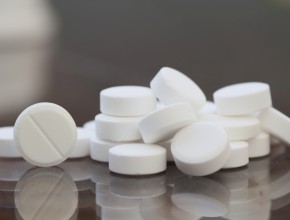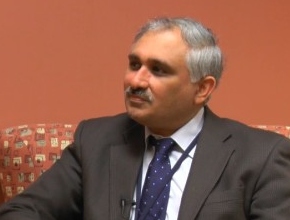Haloperidol and ziprasidone for treatment of delirium in the critically ill
Bleck TP. Dopamine Antagonists in ICU Delirium. N Engl J Med. 2018 Oct 22. doi: 10.1056/NEJMe1813382. [Epub ahead of print] PubMed PMID: 30346241.
The pharmacologic answer to delirium is not obvious.
The study screened 1183 patients with shock or with respiratory failure requiring mechanical ventilation, of whom 566 (48%) developed hypoactive or hyperactive delirium. Delirium was diagnosed using the Confusion Assessment Method for the Intensive Care Unit (CAM-ICU). Patients with delirium were randomized to receive intravenous placebo, haloperidol (starting dose, 1.25-2.5 mg; maximum daily dose, 20 mg), or the atypical antipsychotic medication ziprasidone (starting dose, 2.5-5 mg; maximum dose, 40 mg/d) at 12-hour intervals. Doses of the drugs were doubled or halved depending on the presence or absence of delirium at consecutive assessments.
During the 14-day intervention period, the median number of days alive and without delirium or coma was 8.5 in the placebo group, 7.9 in the haloperidol group, and 8.7 in the ziprasidone group. There were no differences in other variables, including mortality or lengths of stay in the ICU and hospital.
The authors observed a very high incidence of delirium and pointed out the lack of effect of the commonly used medications.
Pantoprazole in ICU patients at risk for GI bleeding
Barkun A, Bardou M. Proton-Pump Inhibitor Prophylaxis in the ICU – Benefits Worth the Risks? N Engl J Med. 2018 Oct 24. doi: 10.1056/NEJMe1810021. [Epub ahead of print] PubMed PMID: 30354949.
Gastrointestinal (GI) bleeding prophylaxis has debatable benefits among critically ill patients.
GI bleeding among the critically ill is considered a significant event and its prophylaxis is repeatedly advocated in clinical practice guidelines. In this study close to 3300 patients at risk of GI bleeding were treated with 40 mg of pantoprazole daily or placebo. Patients at risk were defined as those with shock, receiving anticoagulants, expected to be ventilated for >24 hours, undergoing renal replacement therapy, with history of liver disease, or with history of or current coagulopathy.
Over the course of 90 days, the occurrence of significant GI bleeding was 2.5% in the pantoprazole group and 4.2% in the placebo group (relative risk, 0.58; 95% CI, 0.40-0.86). The occurrence of other events, in isolation or in combination with GI bleeding, was not different between the groups: 90-day mortality was 30.4% in the placebo group and 31.1% in the pantoprazole group, and at least one of a composite of GI bleeding, pneumonia, Clostridium difficile infection, or myocardial ischemia occurred in 22.6% and 21.9% of patients, respectively.
The interpretation of the results will likely differ, with some finding them supportive of GI prophylaxis because of the decreased risk of bleeding, and some finding them supportive of not using prophylaxis as the treatment does not seem to influence the rates of death or the combination of clinically relevant endpoints.
Energy-dense vs routine enteral nutrition in the critically ill
Increased caloric delivery has not affected outcomes of critically ill patients.
Current modes of nutritional delivery do not meet theoretical energy requirements of the critically ill. This study tested the hypothesis that delivering enteral nutrition with higher energy contents may have beneficial effects in such situations.
Close to 4000 critically ill patients on mechanical ventilation were randomized to receive either an energy-dense (1.5 kcal/mL) or a regular formulation (1.0 kcal/mL). Over the course of trial nutrition that commenced sometime during ICU admission and lasted for a median of 6 days, the average caloric intake was 1863 kcal/d in the energy-dense group and 1262 kcal/d in the control group.
There were no differences in the 90-day mortality rate (26.8% in the energy-dense group compared with 25.7% among controls) or in any other outcome measured, including survival time, need for organ support, and the incidence of infections or major adverse events.
 English
English
 Español
Español
 українська
українська









